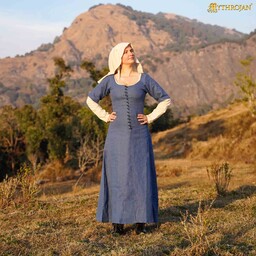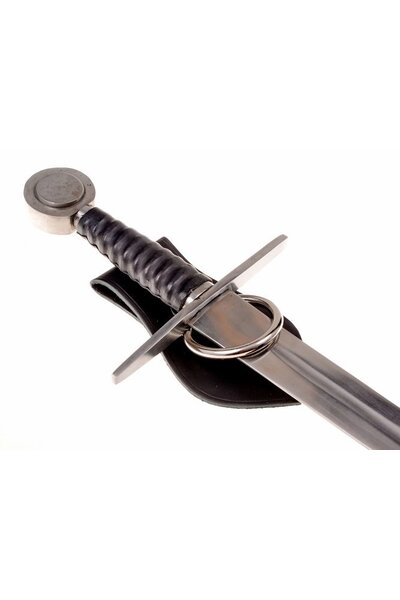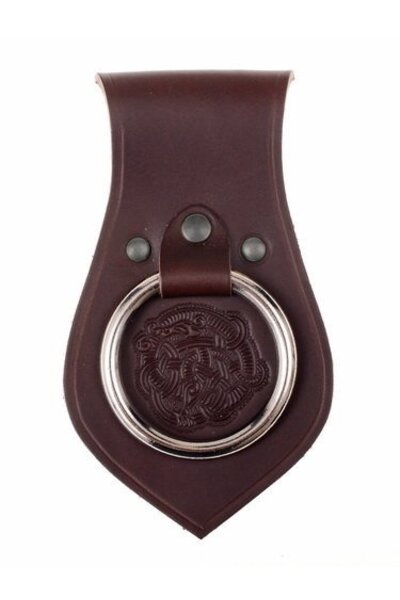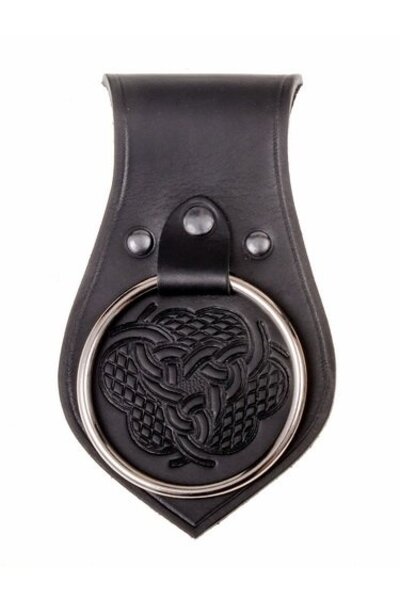Product description
A kirtle (sometimes also called a cotte or cotehardie) is a garment that was worn by both men and women in medieval Europe. It eventually became a one-piece garment for women from the late Middle Ages to the Baroque period. The kirtle was typically worn over a chemise or underdress, which functioned as an undergarment.
Kirtles were part of the fashion until the mid-16th century and remained a part of the clothing of the rural population or middle class until the 17th century.
Kirtles began as loose garments without a waist seam and evolved in the 14th century into form-fitting supportive garments. Later, kirtles could be made by combining a well-fitted bodice with a skirt that was pleated at the waist seam. Kirtles could be fastened at the front, back, or side, depending on the fashion of the time and place and the type of gown worn over it. Kirtles could be decorated with various embellishments, including gold, silk, tassels, and buttons.
Our reproduction is made with rectangular body panels, with gores in the skirt and inset sleeves. The neckline and closure panel are reinforced with linen for added strength and to prevent stretching. This has been carried through to prevent it from being visible during wear. The eyelets are hand-made, but the other visible stitching (topstitching and hem) is machine-stitched, as are the other construction stitches. The cotehardie has short sleeves, under which you can wear an underdress in a contrasting color.
This reproduction is made of 100% linen, perfect for summer 15th to 17th-century reenactment events.
Details
Material: 100% linen (150 gsm);
Size: S to XXL;
Color: Blue;
Based on historical originals;
Perfect for 15th-17th century reenactment;
Cold hand wash or machine wash on hand wash setting


















